One of the things everyone comments on in Tuscany is how tasteless the bread is. There is a reason, there is no salt in the dough.
In the past, salt was a commodity. Florence bought their salt from Pisa. Pisa put a salt tax so high, that normal people couldn’t use salt for things like making bread. The word salt in Italian, sale, is the root word of salary, salario. Roman soldiers were paid a bag of salt as part of their salary. Salt keeps you hydrated and stronger. You can live longer without food that without water.
So the saying, “You are worth your weight in salt” means a lot.
Tuscans never eat bread on it’s own. It is always eaten with something and often that something is salty. Balance.
The other thing that salt does in food, is preserve it. Obviously things like prosciutti are made by being salted. In the process, it removes the water from the hams, which then let the meat age without getting moldy. Bread made without salt goes stale quickly. Tuscans never waste food and there is a series of recipes using stale bread.
In summer, Panzanella is a favorite way to reuse the bread. I can’t get enough of it! But here, you won’t see croutons in the salad. In America, where the bread has salt, it won’t go stale, so instead they toast the bread and use it like that.
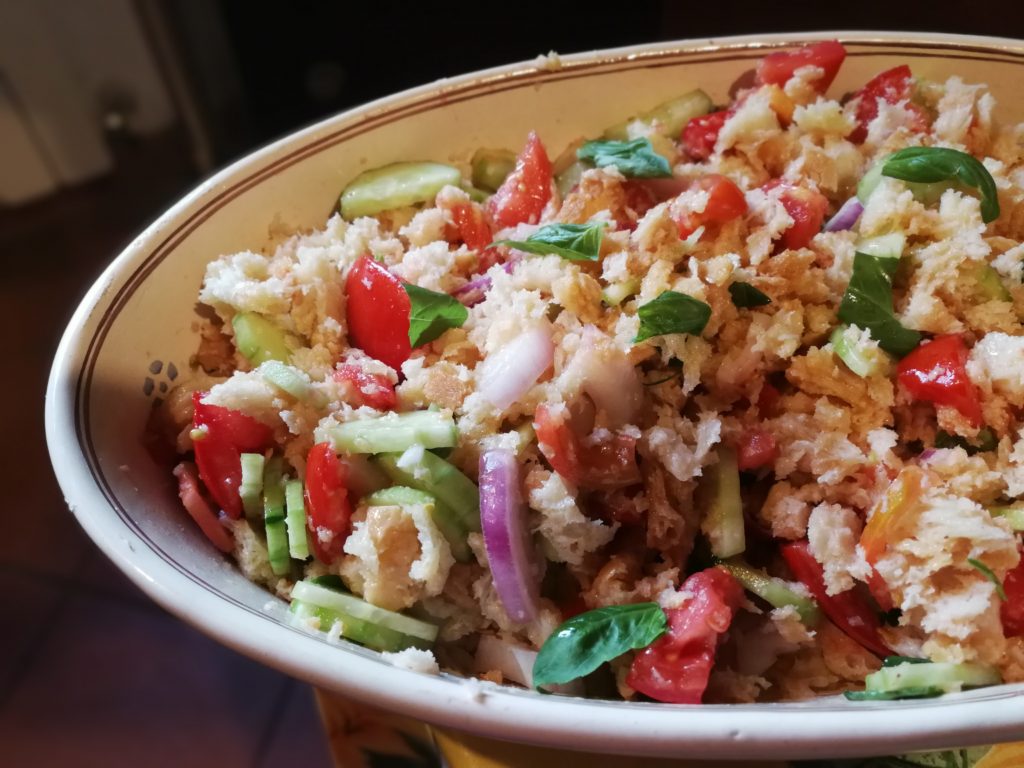
There is a similar recipe in Matera in Basilicata, where their bread is also made with salt and a hard wheat flour. The salad is called la cialledda. The same base as Panzanella with tomatoes, cucumbers, tomatoes and onions. Matera’s bread is a huge load, baked in wood burning ovens. Usually 5 pounds each loaf.
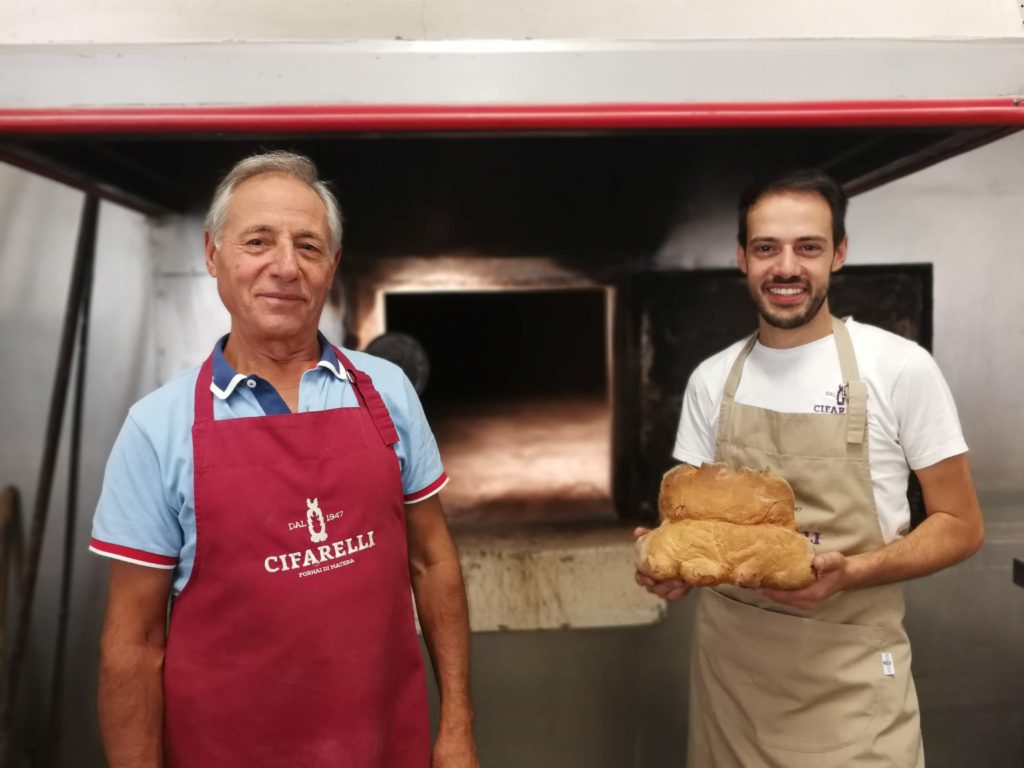
This is the Cialledda salad we had in Matera. The croutons were very crispy.
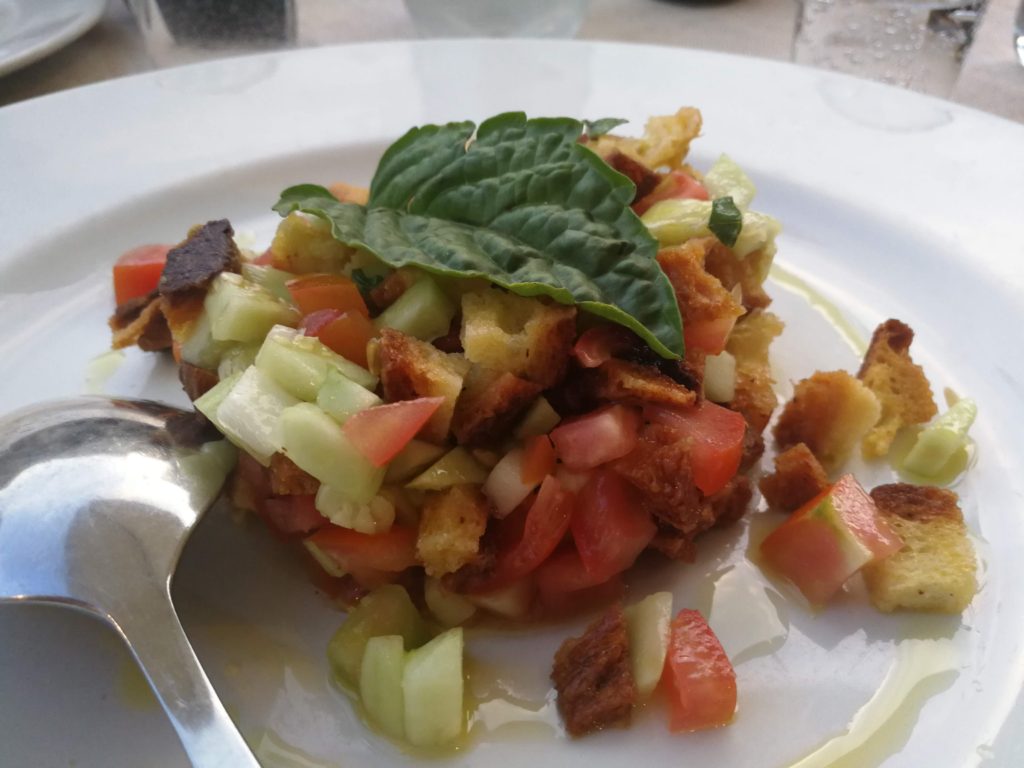
In Puglia, they twice bake a bagel like bread called Freselle. They soak the bread and then top with marinated tomatoes and can add other ingredients as well. I have had a wonderful recipe called Acquasale, which can be served like a bruschetta or even a “white gaspacho” with water being an important ingredient. Sometime it is served like a panzanella with the freselle broken up in the vegetable topping.
I had some avocados too! Not traditional.. but like a bruschetta, why not?
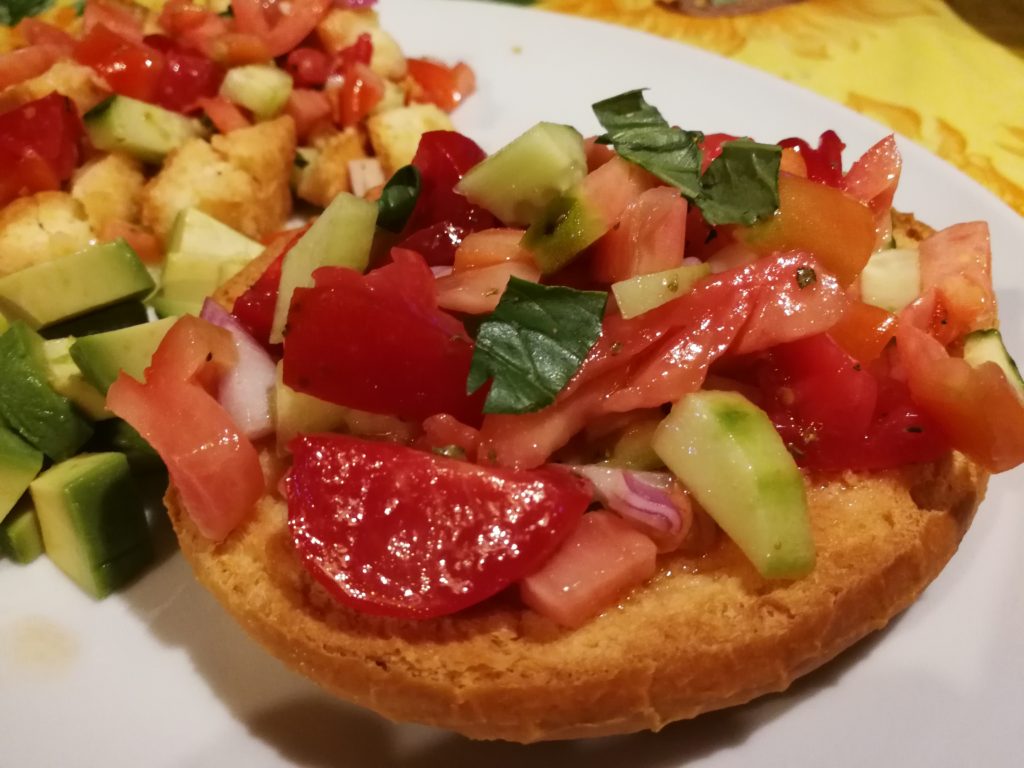
Today I wanted to show you what you get in Florence so you won’t be shocked. We soak the bread until it is soft and then when squeezing out the water, you crumble it and it comes out like a cous cous.
It is then dressed with extra virgin olive oil, vinegar and salt. It can be light like cous cous or really wet. Tuscans make a soup called Pappa al Pomodoro, with the bread as a base and also ribollita is reboiled minestrone with the stale bread added for density. Rib-sticking food. La Cucina Povera, the poor cuisine, is actually trendy now. In his recent book, Massimo Bottura, Bread is Gold, He published the recipes that were used in the soup kitchen created to upcycle the left over food in Italy’s EXPO a few years back. He had famous chef’s come and raid the kitchen for what was left-over and create menus.
My husband adores bread and we rarely have any leftover, so I buy bread to make these recipes. When I go to the bakery, if I am lucky, they may have some day old bread. I tell them what I am going to make.
Panzanella
Today I am going to just tell you the recipe like if you were here with me and go through it step-by-step.
Slice some day old bread. I did 4 thick slices for my husband and myself.
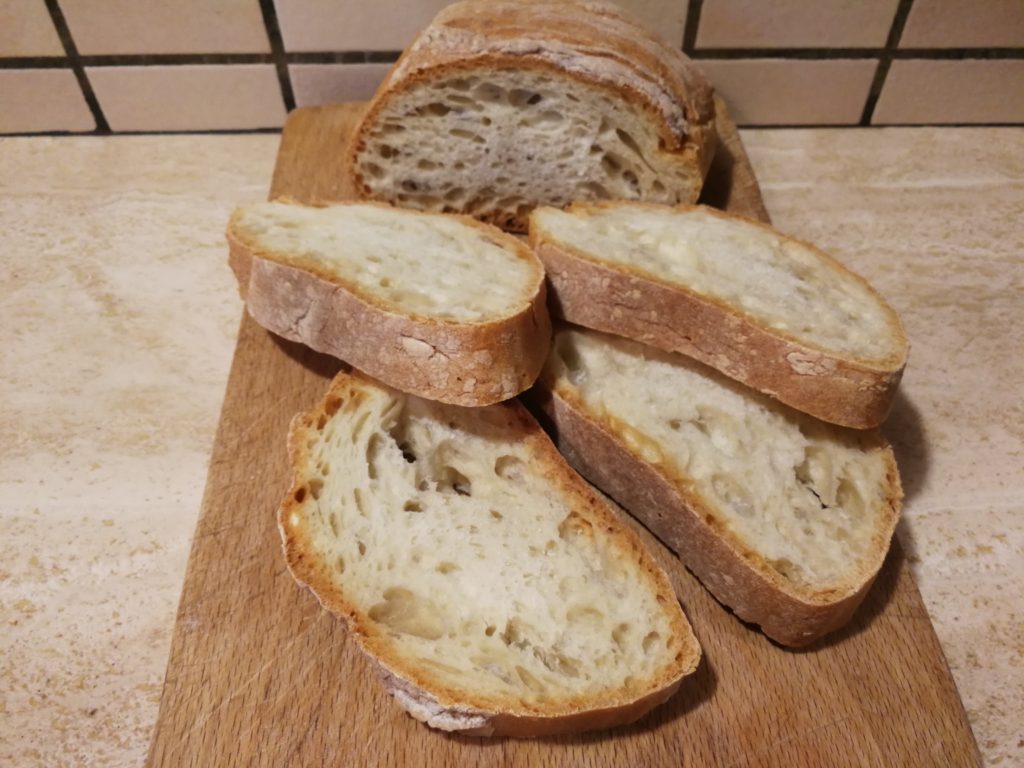
Tear up the bread and soak it in cold water until soft.
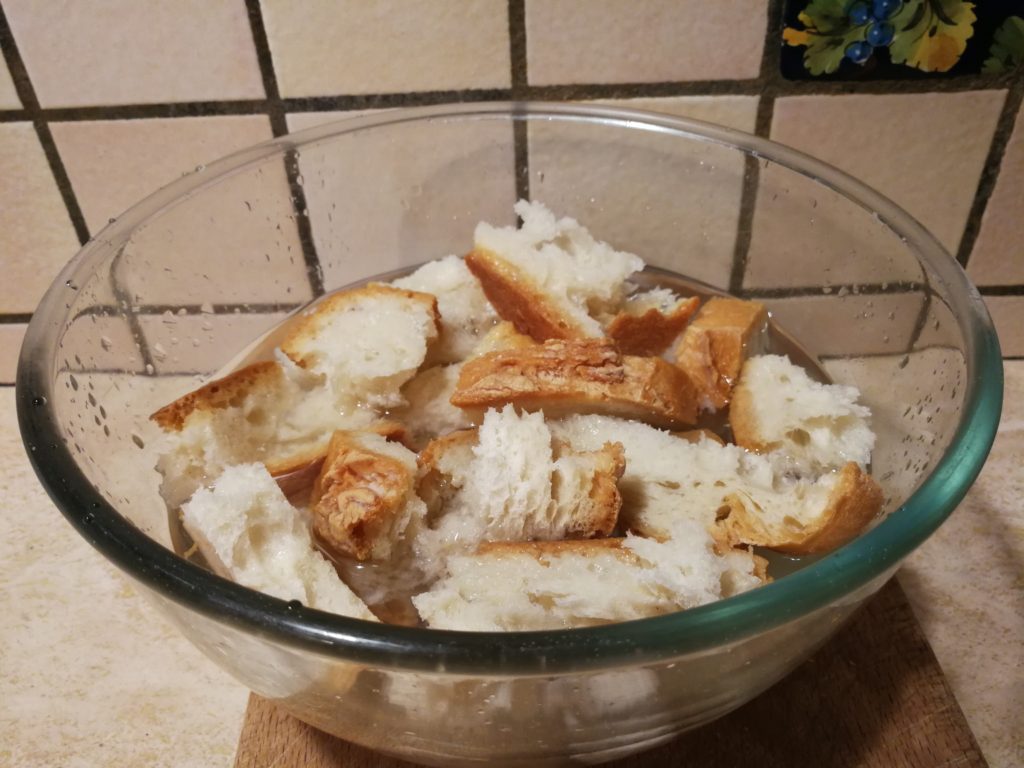
Then squeeze out the water and crumble the bread into a bowl.
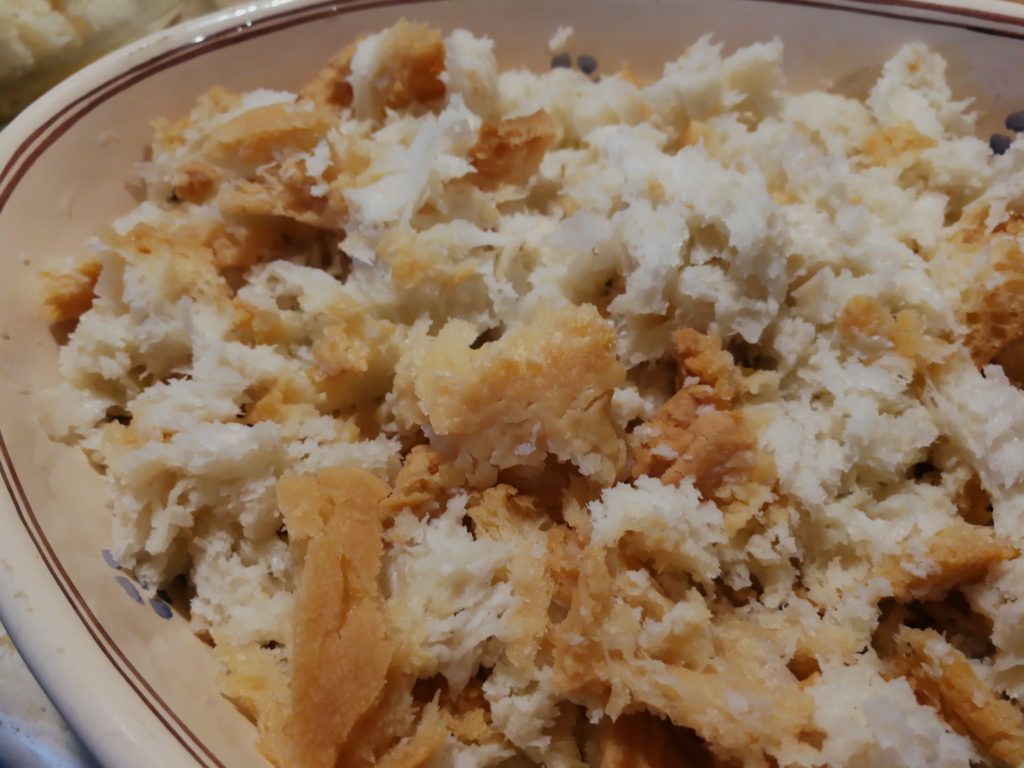
Chop up some ripe red tomatoes, a cucumber and red onion. ( Italians like unripe tomatoes in salad so I did some mixed tomatoes) I used 4 red tomatoes and one of the greener ones. Two red onions and some torn basil leaves. My village Certaldo is famous for their sweet red onions.
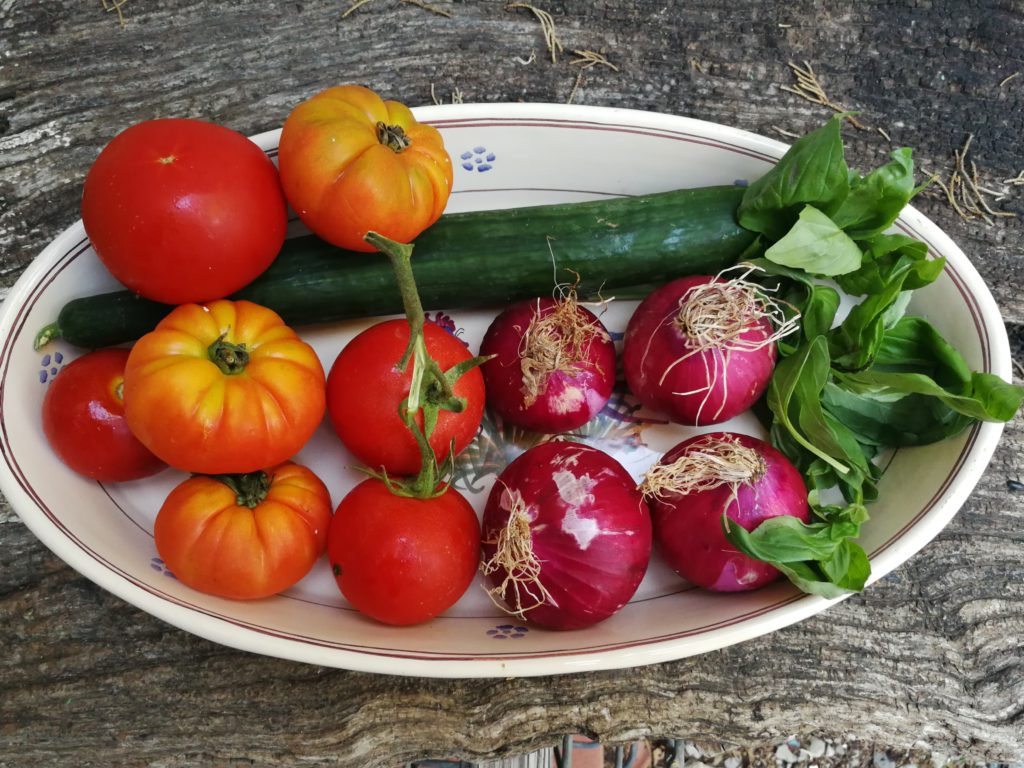
Place the chopped vegetables onto the crumbled bread and lightly salt the vegetables. This will make them lose some liquid and the bread will soak it up.

After about 10 minutes, you can mix up the bread and the vegetables.
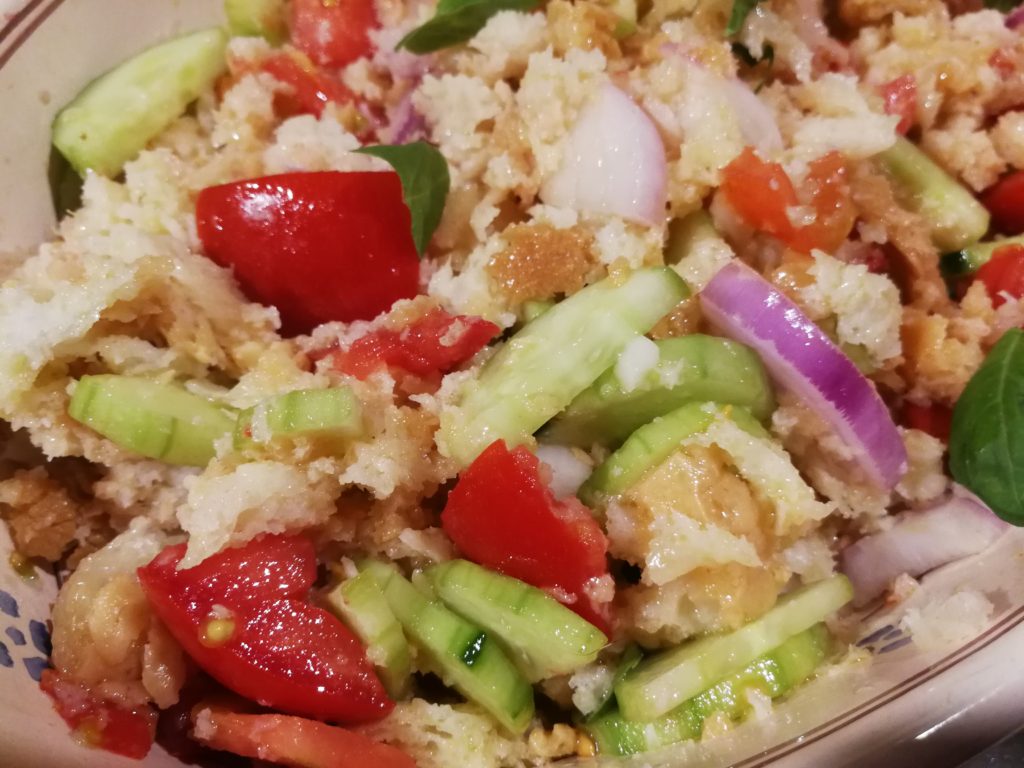
Then dress with extra virgin olive oil and vinegar to taste.

I love to chill it before serving and then correct the seasonings. Usually restaurants with serve oil and vinegar on the side for you to tweek the recipe to your tastes.
Here is a little FB live I did on making Panzanella.

Mmm! Thank you, Judy.
Great info..and recipes, as always.!!!!
Delightful story and delicious photographs! It’s obvious that you the old Italian belief that we eat with our eyes first!
Thanks for the great explanation of the Panzanella origins and recipe-now I know why, when I tried it, the bread turned to mush! We have the salad, minus the soggy lumps of US bread, at least once a week all summer. I’ll make another attempt with more authentic bread sometime….
The bread looks delicious. Do you know of anyone that would teach me to cook Italian if I came to Italy. I’m in chef school but I want to learn from the best.
Please email me.
Love seeing this. We are in Italy for one year traveling and my vedura lady just gave us pantella and now I find your site! Love it!! Thank you for sharing. We just became dual citizens, ouritalianjourney.com.
she gave you panzanella salad already made?